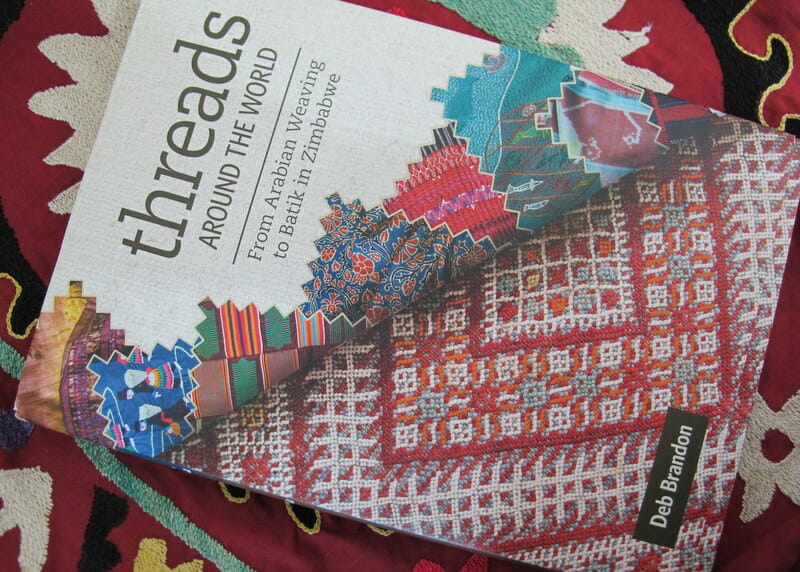A Textile Book Review:
Author: Deb Brandon
Photographer: Joe Coca
Publisher: Schiffer Publishers
Format & layout:
180 x 254 mm (7″ x 10″)
Hardcover
160 pages
ISBN 9780764356506
Full-colour images with text on a white background
 Images:
Images:
This book is meant to be visually enjoyed just as much as it is meant to be read. Every spread contains at least one colour image. Every new chapter starts with a full-page hero shot, setting the scene for the text to follow. Although the official photographer for the book is listed as Joe Coca, several of the images were supplied by other photographers or by the author.
What I enjoyed about the images is that it not only shows the textiles itself, but it puts it in context with the people and in the place where it is made and used. Many chapters also include images showing technique and work in progress. The images are an important part of the narrative and complete the written stories.
 Introduction:
Introduction:
Deb Brandon wears many hats. She is a textile artist and weaver; a writer and author; a mathematician and teacher; a brain-injury survivor and advocate; and a dragon boat racer. In other words, she is a busy woman who doesn’t wait for life to come to her – she goes out and lives it.
Deb’s work as a textile artist and weaver lead to her involvement with WARP (Weave A Real Peace) an organisation whose mission is to foster a global network of enthusiasts valuing the importance of textiles to grassroots economies.
This book grew from Deb’s regular column in WARP’s newsletter called Threads Around The World, where she wrote about textile traditions from different cultures.
 Content:
Content:
The book is divided into twenty-five chapters, each telling the story of different textiles from different parts of the world. The chapters are not in any particular order but jump from weaving to embroidery to printing with the same ease it jumps from India to Panama to Scotland. It is a wild ride full of fascinating stories and beautiful textiles.
Each chapter starts with a story. Either a story about the people making the textile or of the author’s experience with the textile. This is followed by putting it in context – how people use the textile and how it fits into their lives. The chapter concludes with technical information about techniques, tools and production. At the end of each chapter is a list of resources for further reading.
 Conclusion – My experience and opinion of the book:
Conclusion – My experience and opinion of the book:
As a textile writer who thrives on learning and experiencing cultural textiles and the people making and using it, I looked forward to experiencing this book. I was not disappointed. From the colourful front cover to the abundance of images to the rich personal text, the book appealed to me.
It is obvious that Deb Brandon has a deep-seated affinity for textiles, for culture and for travel. Her personal stories combined with good research results in a wonderful armchair travel experience.
The chapters are fairly short and do not provide an in-depth study of each textile, but rather an introduction, overview and, most importantly, an emotional connection to each place, person and type of textile. It invites the reader to learn more, to explore and to go and experience it for themselves.
This is an excellent first book for Deb Brandon. And if textile travel is a new concept for you – this is an excellent place to start the journey.
Get your copy here.




 Images:
Images: Introduction:
Introduction: Content:
Content: Conclusion – My experience and opinion of the book:
Conclusion – My experience and opinion of the book:
